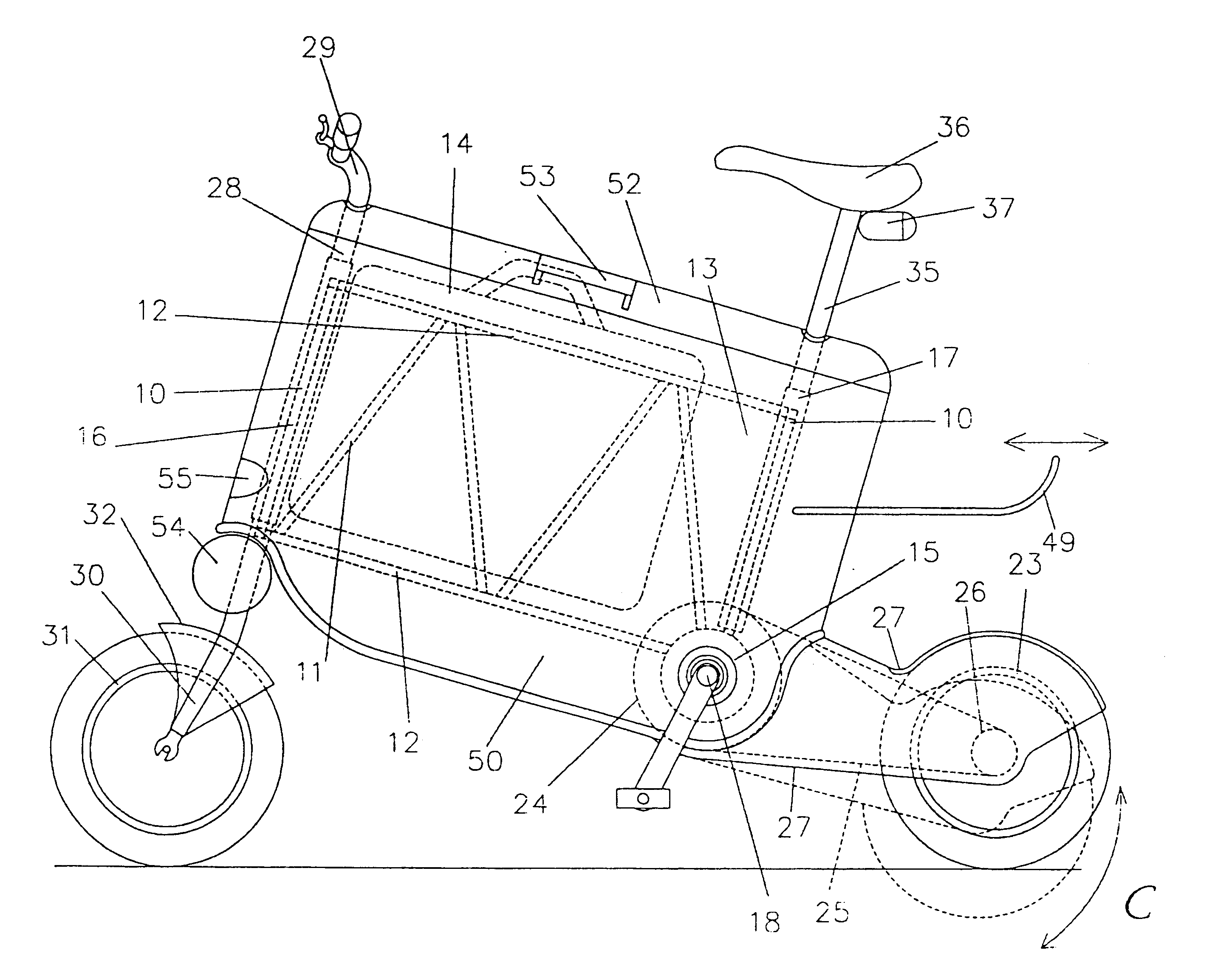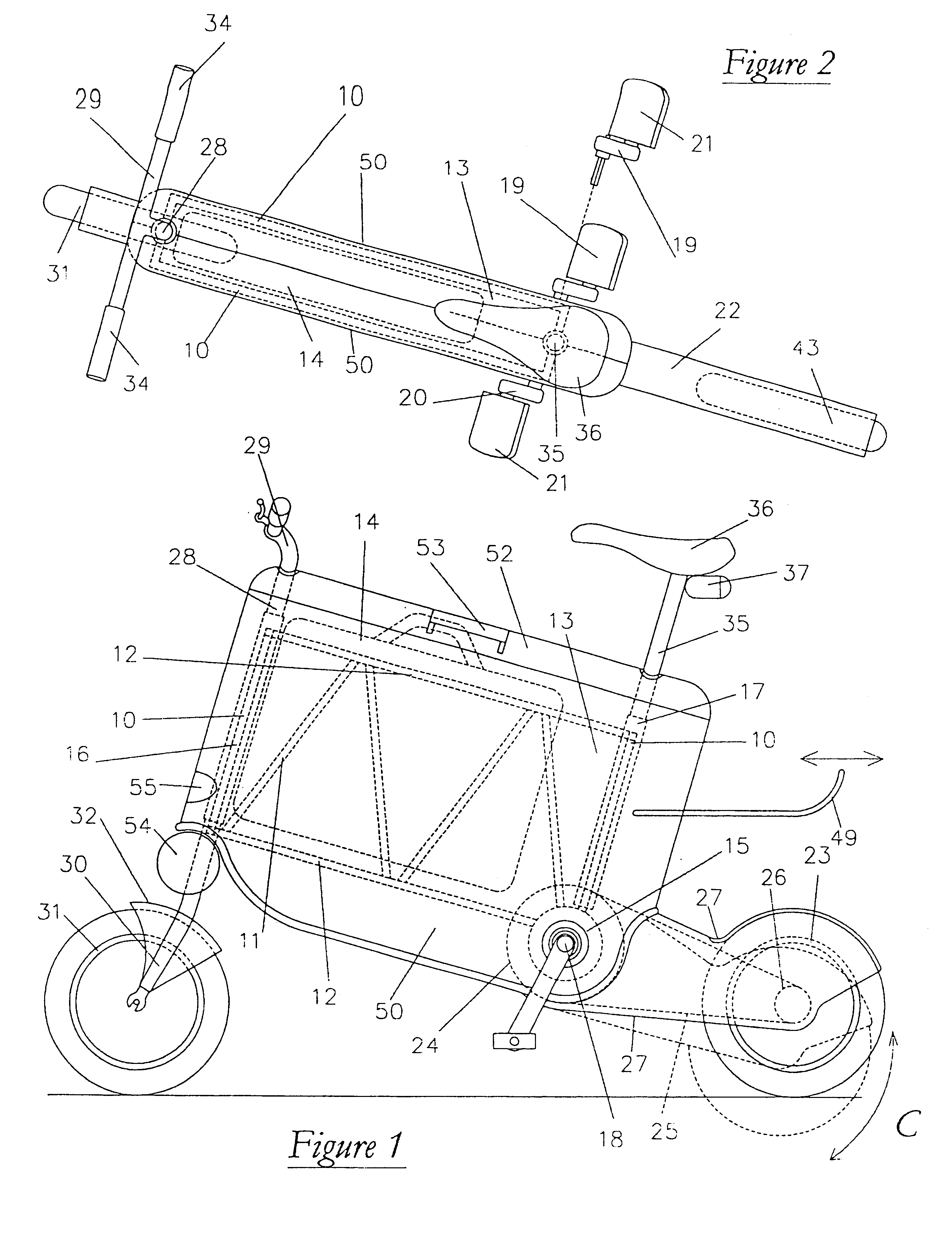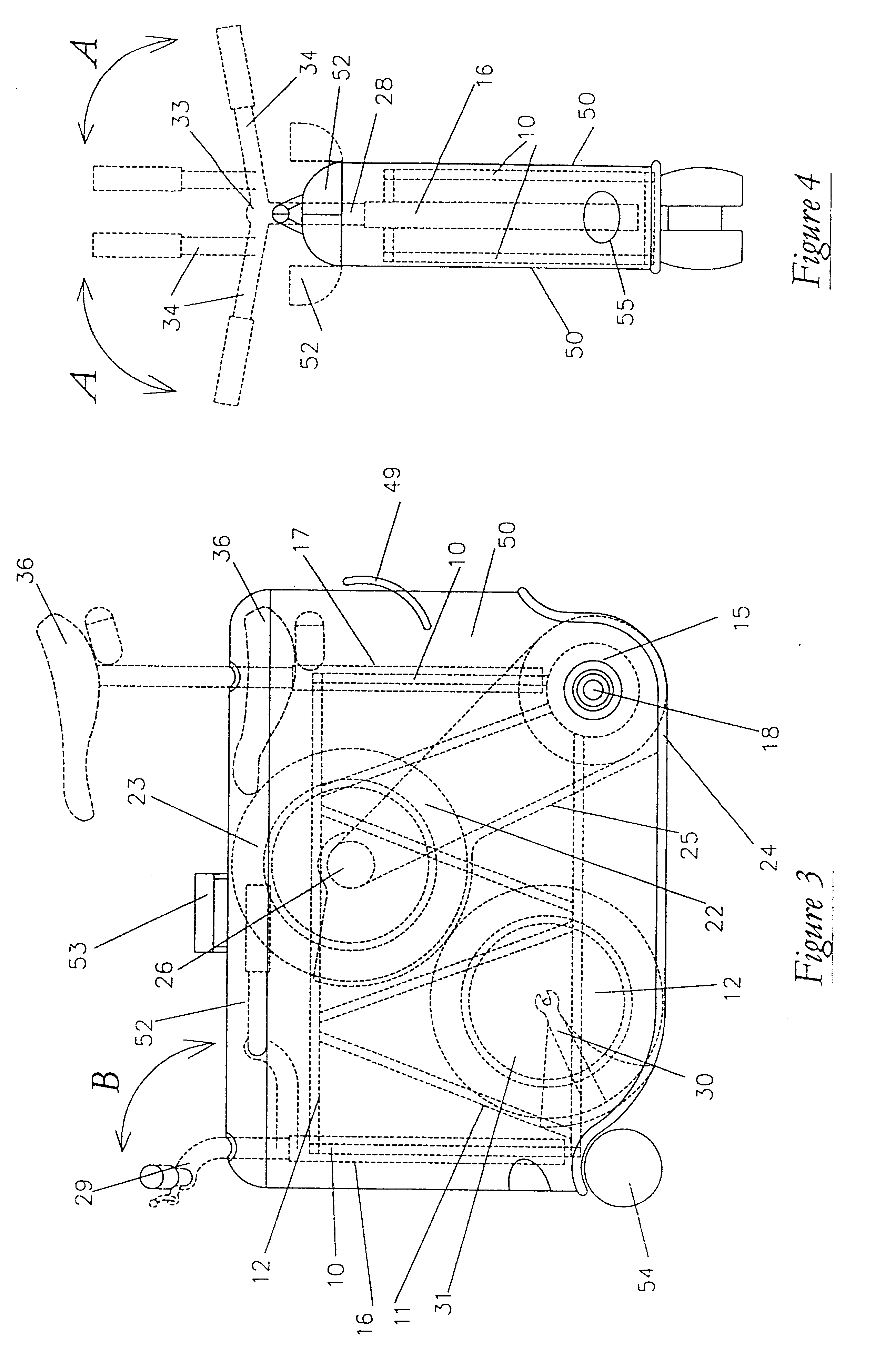Folding two wheeled vehicle
a two-wheeled vehicle and folding technology, applied in the field of bicycles and scooters, can solve the problems of many designs being somewhat unstable, difficult to open out for use, and inconvenient to carry,
- Summary
- Abstract
- Description
- Claims
- Application Information
AI Technical Summary
Benefits of technology
Problems solved by technology
Method used
Image
Examples
Embodiment Construction
Referring initially to FIGS. 1 to 7, there is shown a first embodiment of bicycle of this invention. This comprises a main frame 10 constructed from metal (such as aluminium or titanium) members 11 welded together to form a kind of space frame, of a generally rectangular shape when viewed from the side. The frame 10 includes cross members 12, but there is a void 13 between the frame side members, able to accommodate a typical brief case or other luggage, shown in broken lines in FIG. 1 at 14. The frame could be made of other materials besides metal.
The main frame includes a bottom bracket 15, a head section 16 and a saddle pillar mount 17, all in a fixed relative disposition. The bottom bracket 15 rotatably supports a pedal shaft 18 (to be described in more detail below) which carries a pair of opposed cranks 19, 20, each crank rotatably supporting a respective pedal 21. Also journalled about the bottom bracket 15 is a rear wheel sub-frame 22 carrying at its outer end a rear wheel 2...
PUM
 Login to View More
Login to View More Abstract
Description
Claims
Application Information
 Login to View More
Login to View More - R&D
- Intellectual Property
- Life Sciences
- Materials
- Tech Scout
- Unparalleled Data Quality
- Higher Quality Content
- 60% Fewer Hallucinations
Browse by: Latest US Patents, China's latest patents, Technical Efficacy Thesaurus, Application Domain, Technology Topic, Popular Technical Reports.
© 2025 PatSnap. All rights reserved.Legal|Privacy policy|Modern Slavery Act Transparency Statement|Sitemap|About US| Contact US: help@patsnap.com



